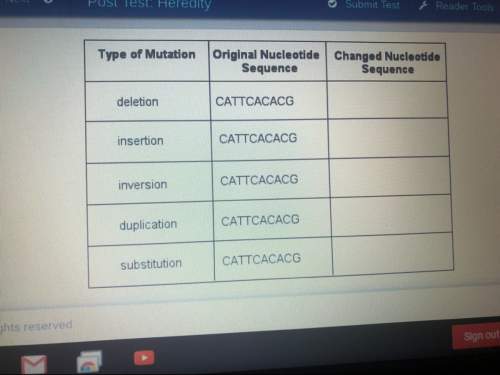
Biology, 23.10.2019 02:30 dtgwrth4150
Y-: yellow s-: star yy: black ss: starless
all the sneetches want their children to have stars on their bellies. the combination of alleles that makes a black, starless sneetch is embryonic lethal. y and s are two independently assorting autosomal genes. a true breeding black star bellied sneetch mated with a true breeding yellow starless sneetch and produced 20 f1 sneetches. the f1 then mated with each other and produced 300 f2 progeny.
1. what is the f1 phenotype?
2. among 300 f2 sneetches, how many of them are black star bellied sneetches?
3. what proportion of these black star f2 would be true breeding (homozygous)?
4. among 300 f2 sneetches, how many of them are yellow star bellied sneetches?
5.what proportion of these yellow star f2 would be true breeding?

Answers: 3


Another question on Biology


Biology, 21.06.2019 23:10
This is the amino acid cysteine. circle the amine group, put a box aroundthe carboxylic acid group and use a different colored pencil/pen to circle the sidechain (r group). h o | ||nh2— c- c-oh | ch2 | sh
Answers: 1

Biology, 22.06.2019 02:00
Bisphenol a (often called bpa) is a chemical found in products that people use every day, from water bottles to food containers to children's toys. unfortunately, bpa leaches out of its many products and makes its way into our bodies. what are the health effects of bpa exposure? ongoing research is finding that elevated exposure to bpa can affect a wide variety of developmental and physiological processes, but one of the first studies of bpa's health effects came about because of a simple mistake in the lab. at a laboratory at case western reserve university in 1998, geneticist patricia hunt was making a routine check of her female lab mice. as she extracted and examined developing eggs from the ovaries, she began to wonder what had gone wrong. she noticed that many of the eggs showed problems with their chromosomes, and some had irregular amounts of genetic material, which can lead to miscarriages and birth defects in mammals. she learned that a lab assistant had mistakenly washed the plastic mouse cages and water bottles with a harsh soap, releasing bpa from the plastic. knowing that bpa is an endocrine disruptor, a chemical that can enter organisms and mimic hormones, hunt set out to discover whether it had adversely affected her mice.
Answers: 2

Biology, 22.06.2019 09:50
What is the genotype of the male circled in pink? ο χου lo xay xaya done answer was xay
Answers: 2
You know the right answer?
Y-: yellow s-: star yy: black ss: starless
all the sneetches want their children to have s...
all the sneetches want their children to have s...
Questions



History, 20.01.2021 17:20



Geography, 20.01.2021 17:20

Mathematics, 20.01.2021 17:20







Biology, 20.01.2021 17:20

English, 20.01.2021 17:20

Physics, 20.01.2021 17:20

Mathematics, 20.01.2021 17:20


Biology, 20.01.2021 17:20

Business, 20.01.2021 17:30




